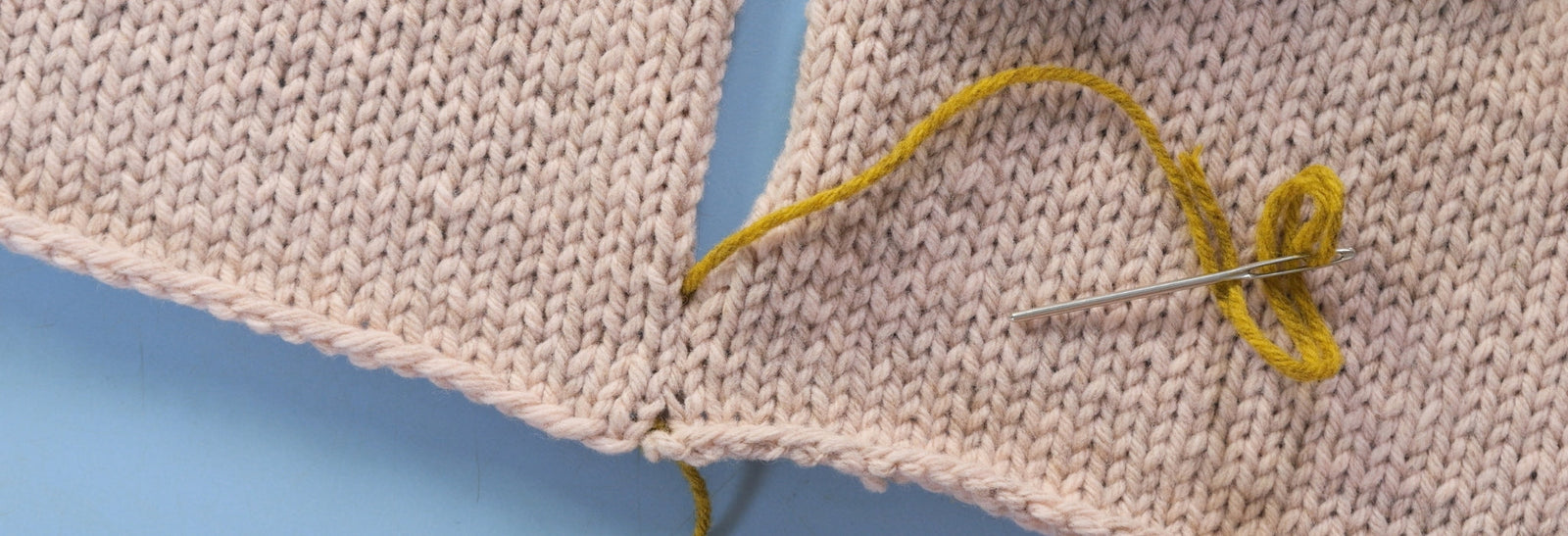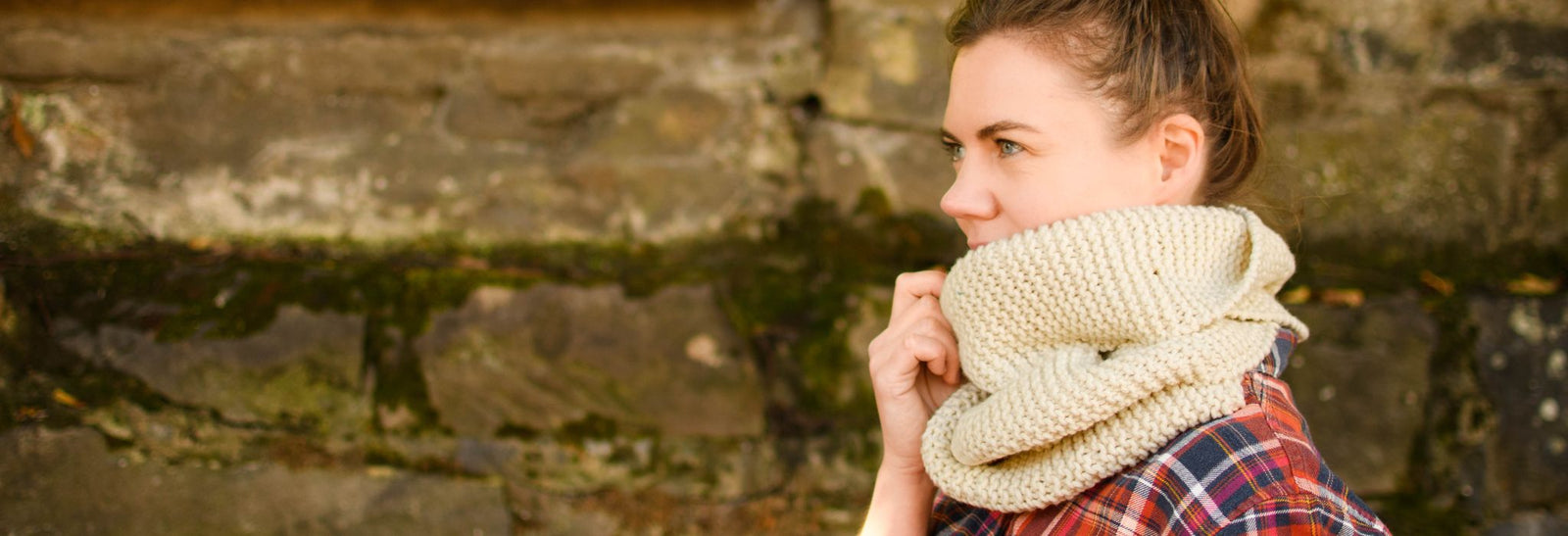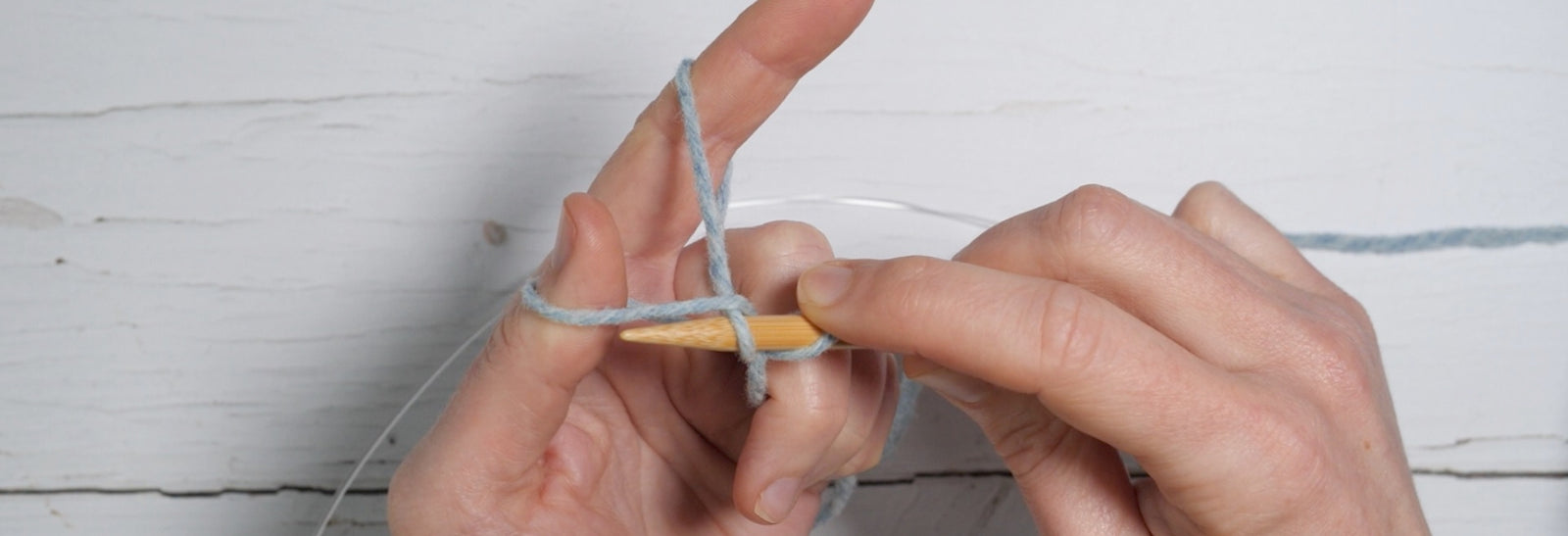Your Cart is Empty

Photographing your makes
November 24, 2020
As makers ourselves, we love to see people celebrating not just their creativity but also expressing who they are and celebrating themselves too. In the our ongoing photography series, we've invited contributors to talk us through both the technical and emotional side of taking a photo.
Next up is a guest post by Kat Goldin, a smallholder, photographer and art director of The Crochet Project, who talks us through the process of photographing your makes - such an important part of capturing the story of what you create.
- Ysolda



From those first stitches to the midway point to that beautiful finished object, capturing the journey of your makes can be such a special part of the creating process. It tells the story of the make in a way project notes just can’t - the ups and downs, the time of year, the yarn you used, the cups of tea drank and if you are sharing on social media or on Ravelry, it brings your followers along with you on that journey.
Gather Your Tools

The Camera:
I think that it is easy to get caught up on what camera you need to take photos. It used to be that there was a stark difference between a “professional” camera and a camera phone. When I started teaching photography 9 years ago, we would recommend buying an SLR as a way to get reliably great images. Advances in technology, especially in smart phone cameras, means that most of us have amazing tools in our pockets, with high resolution, good controls and, importantly, convenience!!! It’s always there with you and ready to be shared.
Other tools:
While things like reflectors, backdrops, flashes or lighting can all be helpful if you are photographing your knits, the only other tool that I would say is essential in photography is some form of a tripod. Getting photos of yourself can be tricky without one. It gives you a bit more flexibility when it comes to posing for photos or getting in-progress making shots and means you aren’t reliant on a friend or family member to take photos for you.
You don’t need to spend a lot to get a decent tripod. There are phone specific ones that range in price and are really useful for getting photos of yourself from a bit more of a distance than a selfie. That said, I frequently still stick my phone in a jar and stick the jar somewhere for an excellent makeshift tripod.
Photography Basics
The Light:
Photography at its core is the practice of recording light and understanding how light interacts with your subject is what separates a good photo from a great one. Knit- and crochet-wear and all of their associated tools, notions and yarns have such a place in my heart precisely because of the way they interact with light. The textures and patterns, their softness and structure make them a photographer’s (well, this photographer’s) dream.


Lighting the Basics:
No matter what camera you are using, on whatever settings it may be on, the camera “reads” the scene in front of it based on how much light is in it. The more light, the more information it can read. This is why dark photos are often pixelated or grainy - that grain is where the camera is missing information and having to make assumptions about what you are trying to capture. Now, the opposite can be true too - photos that are too bright overwhelm the sensors, completely “blowing out” the image with light.
What you are aiming for is something in between all the light information and none and you have some in camera controls to be able to do that. In a camera like a dslr, you can make adjustments to settings like:
- The ISO: a control that tells the camera how sensitive it should be for light.
- The Aperture: how far open or closed the shutter should be to determine how might light hits the sensor.
- The Shutter Speed: how fast or slow the shutter should stay open for letting all of those lovely photons into the sensor.
In film cameras and many digital cameras, these are physical items you can control. The aperture refers to little blades that dilate around a lens, the shutter is like a curtain in front of the sensor and the ISO is a specially treated film.
On camera phones, however, these are mostly controlled by the computer inside the phone and the computer makes decisions for these controls for you. You can download apps like VSCO (a favourite of mine) or Footej to give you more control of those settings on your phone. This is especially useful if you are struggling to get the photos you want out of your camera phone app.
That said, with the improvements in technology, phones do a pretty great job of taking good photos, so the adjustments you make in camera won’t have as much of an impact on your photos as those that can usually be found by adjusting how and where you are physically taking your photos.


There is one exception to this and that is the bokeh or background blur that is achieved through either the aperture of your lens (ensuring that only the foreground is in focus) or through the camera’s background blur or focus depth feature. This is often where you can tell a “big camera” photo from a camera phone as images from the latter tend to be a bit flatter. Apps like the ones mentioned above can help you control that depth of focus on your images.


Light Sources:
Artificial light and flashes are tricky to get right unless you a) spend a lot of time learning how to work with them or b) spend a lot of money getting high end ones. Generally, speaking natural light is your friend when taking photos of your makes. How your harness and position that light can help you you get great photos and also help set your style for photography.

Overall Light or Front Light:
Writing from a dreary November in Scotland, this sort of light seems like a distant memory of summer, but it is generally what we would consider a “well lit” room or outside on a day that is bright. Light isn’t coming from any particular side and the full image is exposed.
The light source is usually above or at both sides of the subject - think outside on a sunny, but not too sunny day or in a well lit room with light coming in from a window or windows. This is the sort of lighting used in bright, poppy images with projects on a white background where the focus of the image is on the colours and shapes. It helps show off clean lines and colour differentials. These images have historically done well on social media because they make a quick impact.
The thing to remember here is to keep your back to the light (or bum to the sun) whilst being mindful of your shadow. This ensures your subject is getting the most light available.
Good for: portraits, pattern or garment details, main pattern image

Back Light:
A back lit photo is one where the light source sits behind the subject of the photo. This is how you get lens flare - those glowing rings or rays of light in a photo. While not a technically difficult photo to achieve, the trick here is that the light source can often throw off the exposure of your subject, so you lose some of the details of the pattern. What you lose in detail, you do make up for in atmosphere. This is why so many photographers praise “Golden Hour” - the hour just after sunrise and just before sunset - you can get these gorgeous atmospheric shots with beautiful lens flare, but also harness the syrupy light for your overall, more evenly lit shots.
Good for: portraits, creating an atmosphere
Not good for: details

Directional Light:
When a light comes from one singular direction or source, its classed as directional light. For the art fans amongst us its also called chiaroscuro light. This sort of lighting adds depth to your images, with areas of light and shade. I really think that knitwear comes into its own with this sort of lighting as the beautiful texture and tactile nature of the materials shines through in a way that is lost with other kinds of light.
This sort of imagery is achieved by having your subject or project next to a light source like a window.
Good for: showing the texture and details of a project or yarn. Creating atmosphere without losing the details.
Storytelling and Styling:
While light is really key to telling the story of your make in photography, it isn’t the only factor. Making is a process and capturing that process is as much about gathering the elements of that story together in your image(s).
When you are capturing the process of your make, it can be tempting to take a quick in-progress shot and leave it at that. But spending a bit more time to think about the story you want to tell about that make can make the image come alive. A bundled up sweater on your needles may not show off all the hard work you have put into it in the same way as laying it out with a few “props” around it will.

Some things to think about when styling an in-progress shot:
- Show the tools - your needles, notions, yarn and hands are all part of the story of your make. It helps bring the image to life and it helps create visual interest in the image.
- If its wearable, try it on! It shows the scale of the project and is a good record of the progress.
- Show the scene - where do you make, do you have a favourite chair or corner? A place where your project rests? Root your photos in your life.
- Think in triangles - naturally your eye is drawn in diagonals, when setting up your photo, think in triangles to make the photo more interesting and engaging.
Felt Cute, Might Delete Later
One of the hardest elements of photographing your makes is getting that final finished object shot on yourself!! Obviously a tripod and the self timer function on your camera or on your phone are the technical solution to taking images of yourself, but knowing how to style yourself in images can also help you feel more comfortable.
There are often technical reasons why when we look at a photo of ourselves we think “I look awful in that photo”. Photos by their nature flatten 3-d objects and then combined with the angle of portraits are taken at (a phenomenon called foreshortening), we end up not looking like ourselves.
When we smile for the camera, we tend to pull our chins in and scrunch our shoulders up - possibly because we are uncomfortable or we have been trained from a young age to “smile for the camera”. Combine that with foreshortening and it doesn’t make a very recognisable photo of ourselves. To combat this, drop your shoulders and think about pushing your ears towards the camera when you smile. This creates space and shadows in your neck and combats the cameras natural flattening effect. It feels awkward, I know.
Positioning your camera slightly higher than eye level will help get a more natural perspective on your photos, as we are more used to seeing ourselves and others from eye height.
Also, if you are showing a garment or accessory, it can feel awkward to know what to do with your body, especially your hands. I always like to start with the idea of what would I be doing naturally in this piece? Grab a cup of coffee or a book or a cat, pose like a super hero, - give yourself something to do other than standing awkwardly for photos. Not only will it look better and more natural, you will get a better and more interesting photo.
Above and beyond any other tip, my advice for great photos is just to keep taking them. It takes practice to develop a style and an eye and to find a way that works for you.
Want to learn more?
Photographing Your Makes, the 4th installment of The Crochet Project’s Online Course Series: The Self Publishing Toolkit starts on the 1st of December. Find out more here.

Also in Journal

Learn to Knit: Mattress Stitch
March 29, 2023
By following our step-by-step mattress stitch knitting tutorial, you'll learn how to make your seams look beautiful and how best to prepare your knitting so that when you seam it with mattress stitch, it goes smoothly on the first try.
Read More
How to Knit a Scarf: A Beginners Guide to Scarf Knitting
March 23, 2023
Want a quick and easy beginners tutorial on how to knit a scarf? This garter stitch scarf is easy to knit and requires just 3 skills; casting on, the knit stitch and casting off.
Read More
Learn to knit: the long tail cast-on
February 03, 2022
The long tail cast on is a great multi-purpose knitting cast on and the perfect place for beginner knitters to start. Learn how to work the long tail cast on and how to estimate the length of yarn needed with our clear step by step tutorial and video.
Read More Recent Articles
- Learn to Knit: Mattress Stitch March 29, 2023
- How to Knit a Scarf: A Beginners Guide to Scarf Knitting March 23, 2023
- Learn to knit: the long tail cast-on February 03, 2022
- How to Kitchener Stitch December 09, 2021
- Crochet Provisional Cast-on December 02, 2021
- Learn to knit: How to knit in the round with double pointed needles November 25, 2021
- Learn to knit: How to knit in the round using the magic loop technique November 25, 2021
- Learn to knit: How to knit in the round November 25, 2021
- Knitted Gift Ideas for you and your loved ones November 18, 2021
- Celebrating our Porty Hat Preview Knitters October 28, 2021
Free resources
-
KALS, step-by-step pattern guides and free patterns
Learn brioche with the free Daniel's Hat pattern
Tombreck - a free chevron beanie pattern
Working the brioche neck detail on the Polwarth sweater
Basics
Casting on
Decorative Channel Island Cast-on
Binding off
3 Easy Stretchy Bind-offs (p2tog bind-off; k2togtbl, k1 bind-off; Jeny's surprisingly stretchy bind-off)
Tubular Bind-off for brioche stitch
Increasing
Paired increase methods compared
Decreasing
Brioche stitch double decreases
Knitting in the round
How to Knit in the round using Magic Loop
How to Knit in the round using DPNs
Short rows
Swatching and gauge
Tips and tricks
Avoiding ears when binding off
Tighter purl stitches for neater cables and ribbing
Cabling without a cable needle
Reading knitting patterns
Understanding "continue in pattern"
Finishing
Garment knitting
Joining the body and sleeves on a seamless bottom up sweater
Sizing
Inclusive garment knitting
How to pick a garment without a model for you (specifically addresses finding garment patterns when your gender identity isn't represented and the styles you want to knit might not be sized to fit your body)
How does ease affect inclusive size ranges?
Specific stitch patterns
Lace
Identifying and fixing mistakes in lace knitting
Colourwork
Getting started with stranded colourwork
Understanding colour dominance
Working stranded colourwork over small circumferences
Decreases in stranded colourwork
Holding the yarn for stranded colourwork
Ladderback Jacquard (a neat way to deal with long floats)
Cables
Cabling without a cable needle
Cabling without a cable needle on the wrong side
How to knit cabled decreases
Closed ring cable increases and decreasesBrioche
How to work brioche stitch in the round
Other crafts
Cross stitch
How to begin your first large cross stitch project
How to finish a cross stitch project with an embroidery hoop frame
Mending

Sign up today
Find out the latest news from the studio such as sales, pattern releases, and new workshops or KALs our learning community, The Knitwork. We also share helpful tips and exclusive subscriber discounts...

